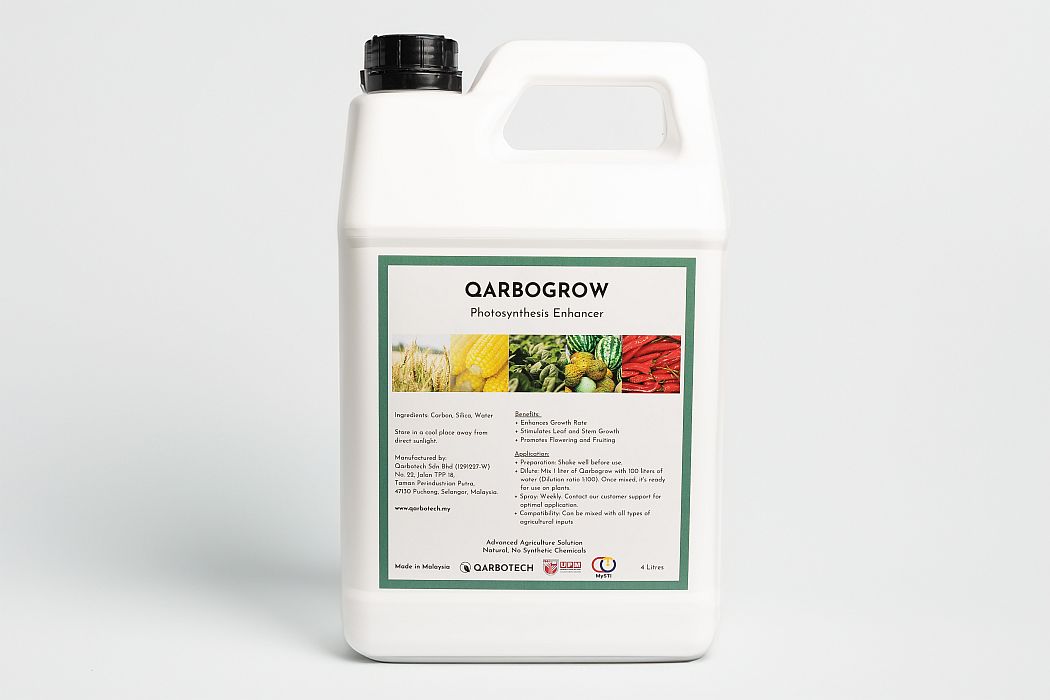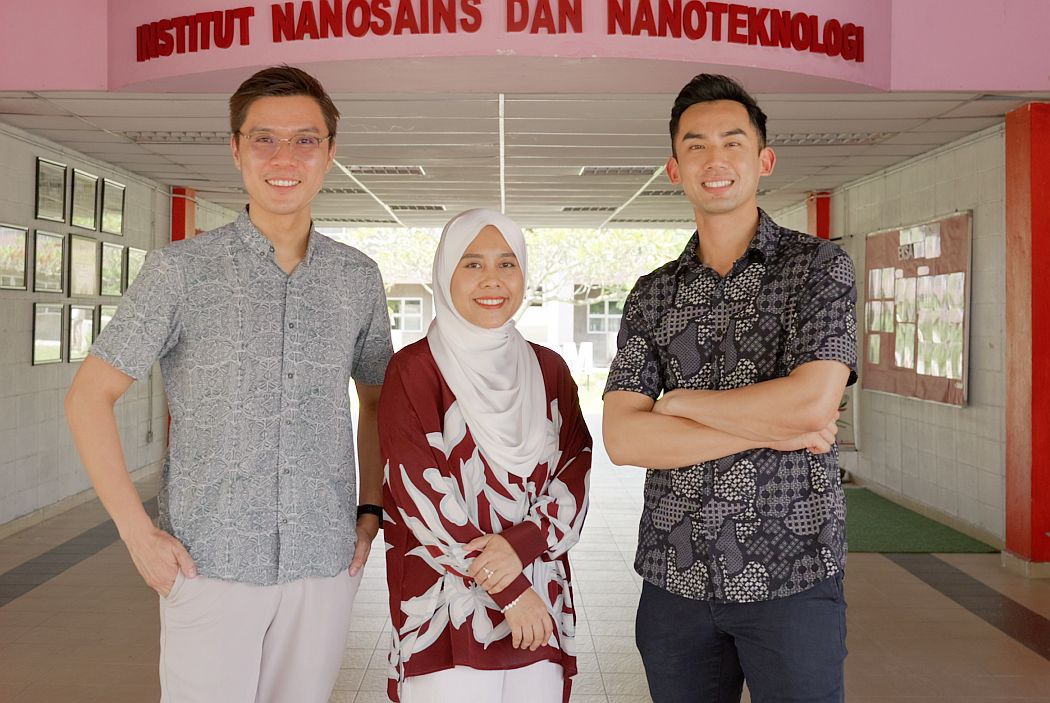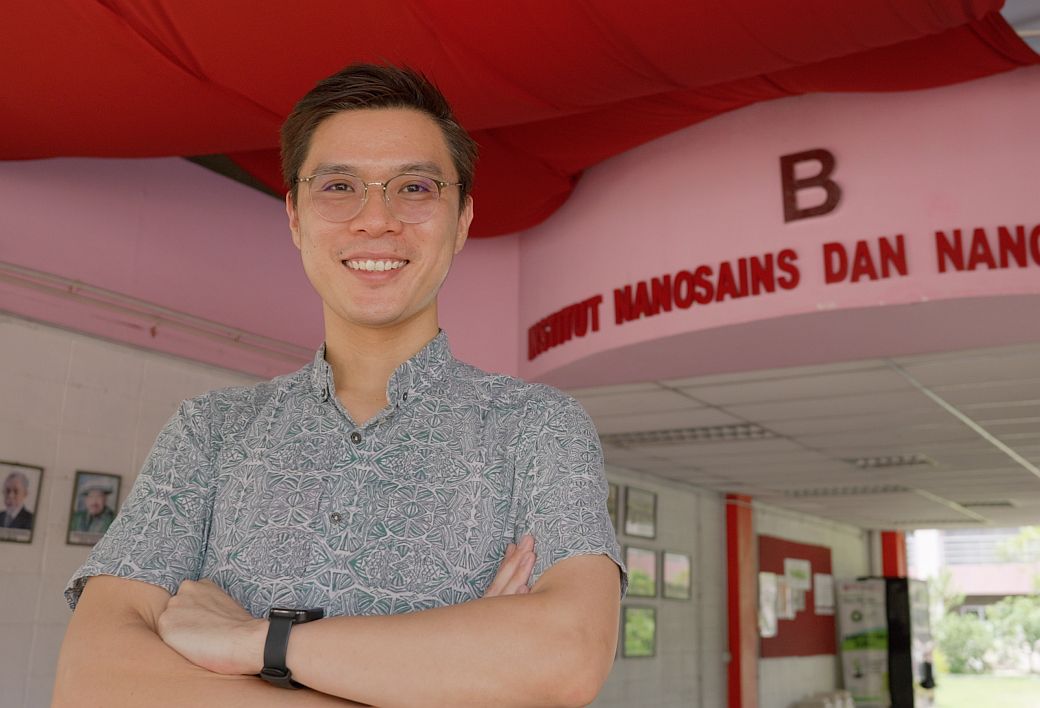Several companies are working on breeding crops that are better at converting sunlight into energy. But there are simpler, cheaper, and faster ways to boost photosynthesis across any crop, claims Malaysian startup QarboTech, which is pioneering a novel approach utilizing carbon quantum dots.
These nanoscale carbon particles—which have applications in everything from cancer diagnosis to LED screens thanks to their unique properties—have been tested in luminescent films installed above plants in greenhouses.
But QarboTech—which has just raised $1.5 million in a seed extension round backed by 500 Global, Better Bite Ventures, ID Capital, EQT Foundation, Epic Angels and others—is the first to apply them directly to plants, CEO Chor Chee Hoe told AgFunderNews.
“The technology was developed by our chief scientist Dr. Suraya Abdul Rashid, who used carbon quantum dots in photocatalysis experiments at Universiti Putra Malaysia as they have this amazing ability to remove carbon dioxide. And then she thought, why not apply this in agriculture, because photosynthesis is all about removing carbon dioxide and generating oxygen.
“She also came up with technology to extract carbon quantum dots from agricultural waste biochar,” said Chor, who met Dr. Rashid through an academic collaboration in 2020 and joined QarboTech as cofounder in 2021.
In a nutshell, the carbon dots penetrate leaves and interact with chloroplasts, the tiny food factories in plants that turn sunlight into energy, optimizing photon (light) absorption and electron transfer, he explained. This improves the health and robustness of the plants, shortening crop cycles and enhancing quality and nutrient absorption, enabling farmers to increase yields and potentially reduce fertilizer use.
“Our product [‘QarboGrow’] is supplied as a concentrate that farmers mix with water and spray onto plant leaves,” said Chor. “As it’s basically inert, it can be mixed with other crop inputs and won’t react with them.”

ROI for farmers
Rice farmers using QarboGrow “can get a return of $5 for every dollar they spend on it,” claimed Chor. “So it varies, but we are talking about a 10-50% improvement in their rice tonnage harvested. On a higher-value crop like lettuces, the ROI could be 10x.”
Unlike plant-breeding approaches, which would have to be tailored for each crop, QarboTech’s solution is “applicable across all plant crops or even microalgae, although we don’t currently recommend it for aquaponics,” he claimed.
While the approach is not a “one and done” in that multiple applications are typically required, this can be integrated into existing spraying or regimens, he said. “So for a rice crop cycle of about 120 days, the farmer will only need to spray four times of our solution to get the impact, for example.”
IP and manufacturing
On the IP front, he said, “We have a patent on the extraction process of our material from biochar or from agricultural waste, and we are now extending our protection to application areas, so applying our quantum dots on specific type of crops.”
As for manufacturing, he said, “Until early 2022 Dr. Rashid was producing our quantum dots in the university lab on a really small scale, so just 200-liters of concentrate a month. Today we are doing about 20,000 liters a month at our new facility [in Puchong], and with the expansion [funded by the recent raise], we should be capable of producing 100,000 liters by March next year.”
Given the inherent risks associated with handling nanomaterials, which can be inhaled or absorbed through the skin in powdered form and enter the lungs, bloodstream, or cells more easily than larger particles, QarboTech’s process ensures that the materials are in liquid form, he said.
“We dispense our material from our very first step in a liquid solution to avoid any hazards to the handlers.”
While the material is easy to transport and is unaffected by variations in temperature, he said, it needs to be stored and transported in opaque packaging, without exposure to direct sunlight as it is light sensitive.
“Our patented technology uniquely solves the inefficiencies of photosynthesis using a scalable and sustainable approach; bypassing the need for genetic modifications.” Dr. Suraya Abdul Rashid, founder and chief scientist, Qarbotech; director, Institute of Nanoscience and Nanotechnology, University Putra Malaysia

“Can you imagine the same farmer with the same land, labor and workflow, being able to produce up to 60% more food? Qarbotech’s photosynthesis multiplier does exactly that.” Khailee Ng, Managing Partner, 500 Global
Go-to-market strategy
QarboGrow, which is classified as a biostimulant for regulatory purposes, has approvals in Malaysia and is going through the regulatory process in Indonesia, which will likely take until the end of 2025, he said.
This timeline is not trivial, but it’s more favorable than it is for firms “trying to augment photosynthesis via gene editing or complicated biotechnology,” he claimed. “We’re kind of cheating the plant to capture more light.”
He added: “We have done our validation across multiple crops, but rice is where we have the most data, with 450 hectares and tonnage increases of 10-50%, whereas with other crops including leafy vegetables, fruiting vegetables, melon, and pineapple, trials are more like 1-10 hectares, so we’ll need more data to convince bigger players [to try the product].
“In Malaysia, we have strong interest from smallholder farmers, because that’s where we started to collect data and build a rapport. Now we are moving to medium and larger size plantations and farms, and some of them have started trialing our product.”
One such partner is Farm Fresh [Malaysia’s leading dairy brand], “which grows its own silage corn for its cows to consume,” he said. “We’re also working with a state-owned enterprise in southern Malaysia testing the effectiveness of our solution for growing its vegetables.”
As for feedback, he said, “The older generation of farmers has been approached by so many different agricultural products players, so it is quite skeptical about anything claiming to improve crop yield. So I would say our early adopters are mainly younger farmers who are more responsive to new agricultural technologies.”




